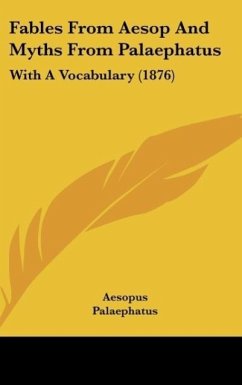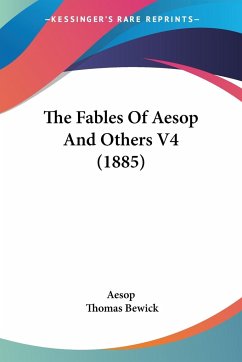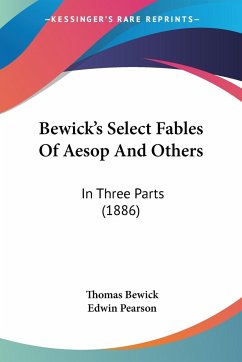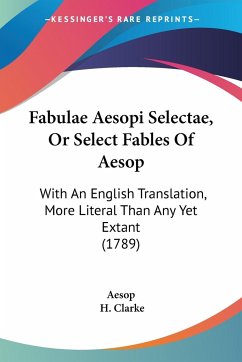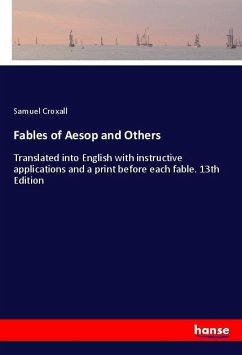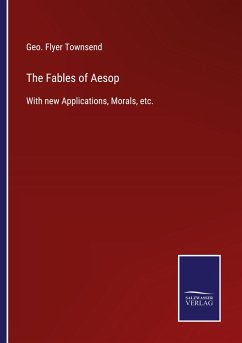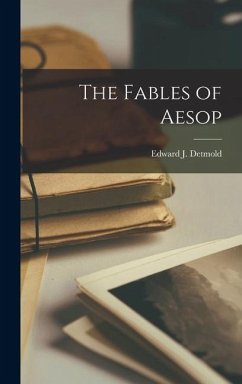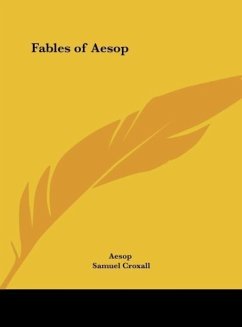
Fables of Aesop
Versandkostenfrei!
Versandfertig in 1-2 Wochen

PAYBACK Punkte
20 °P sammeln!




Teaching by use of fables is a very ancient mode of instruction, to be traced in a greater or lesser degree in the early history of all nations. This volume is a treasure trove of Aesop's fables, each teaching a moral. The translators have added to each little tale the moral and application. Handsomely illustrated throughout.
Aesop, or Æsop (from the Greek ¿¿¿¿¿¿¿ Aisopos), known only for his fables, was by tradition a slave of African descent who lived from about 620 to 560 bc in Ancient Greece. Aesop's Fables are still taught as moral lessons and used as subjects for various entertainments, especially children's plays and cartoons. Aesop wrote thousands of fables, his most famous fable is "The Lion and the Mouse." Nothing was known about Aesop from credible records. The tradition was that he was at one point freed from slavery and that he eventually died at the hands of Delphians. In fact, the obscurity shrouding his life has led some scholars to deny his existence altogether. His most famous fable in America is a parable of "The Tortoise and the Hare." In this story, a rabbit challenges a tortoise to a race. The rabbit is sure of its victory and as a result, depending on the version of the story, in some way completes the race slower than the turtle. Often, the hare takes a nap or takes too many breaks. The persistent tortoise, despite being slower, wins because it persevered.
Produktdetails
- Verlag: Kessinger Publishing, LLC
- Seitenzahl: 398
- Erscheinungstermin: 23. Mai 2010
- Englisch
- Abmessung: 286mm x 221mm x 26mm
- Gewicht: 1257g
- ISBN-13: 9781161382419
- ISBN-10: 1161382410
- Artikelnr.: 31090797
Herstellerkennzeichnung
Libri GmbH
Europaallee 1
36244 Bad Hersfeld
gpsr@libri.de
Für dieses Produkt wurde noch keine Bewertung abgegeben. Wir würden uns sehr freuen, wenn du die erste Bewertung schreibst!
Eine Bewertung schreiben
Eine Bewertung schreiben
Andere Kunden interessierten sich für


